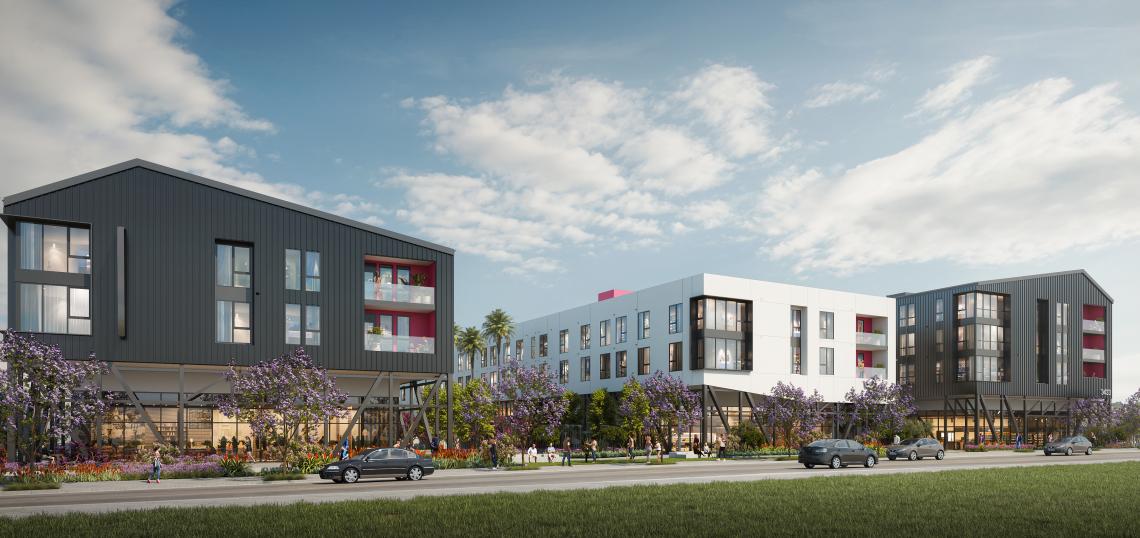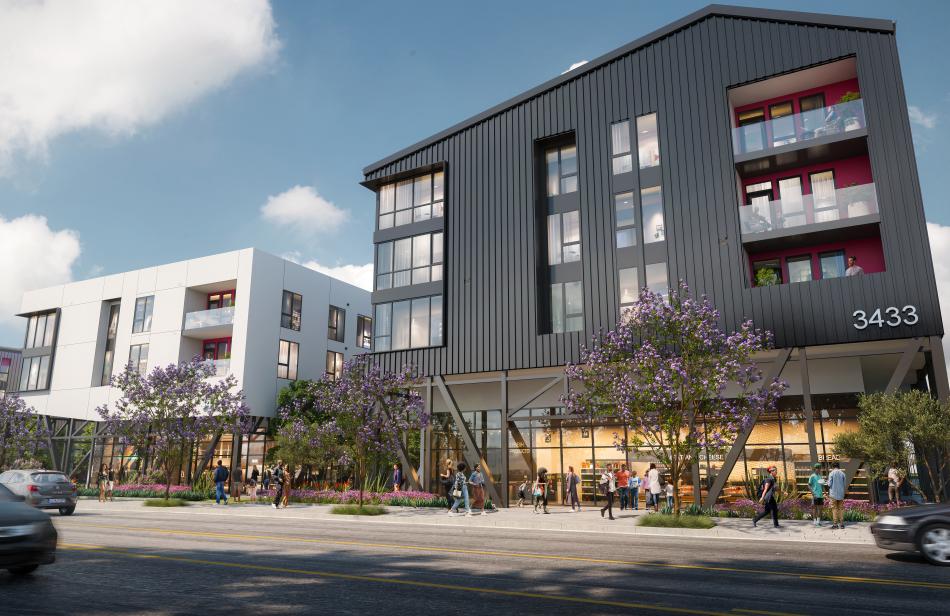In Lincoln Heights, The Max Collaborative and The Pinyon Group have announced the opening of a mixed-use apartment complex near the A Line's Heritage Square Station.
A34, named for its location at 131 W. Avenue 34, consists of 468 studio, one-, and two-bedroom apartments above roughly 16,000 square feet of ground-floor retail space and parking for 311 vehicles.
The site was entitled for development using Transit Oriented Communities incentives to allow greater density and less on-site parking than normally allowed by zoning rules. In exchange, 66 of the apartments are to be set aside as very low-income affordable housing for a period of 55 years, with an additional 192 apartments to be reserved for moderate-income renters.
For the market-rate units, a leasing website advertises floor plans ranging from 535 to 1,163 square feet in size, with rents starting at $2,293 per month and ranging as high as $6,175 per month.
KFA Architecture designed A34, which is intended to blend modern aesthetics with the industrial surroundings of the property, using a mix of stucco and metal on its exterior.
“We purposefully named A34 reflect the rich history of Lincoln Heights,” said Max Collaborative co-founder Kevin Ratner in a statement. “The city identified the project site as a priority for dense housing, so we’re grateful for the opportunity to offer a mix of low-income affordable housing and market rate rentals, all of which are designed to embed residents into this beloved community.”
The first building of A34 is currently open, and the second and third buildings of the complex are slated to follow this summer.
While the project is now crossing the finish line, it faced a difficult road during its entitlement phase due to vocal pushback from some residents of the surrounding neighborhood who argued that the proposed development would accelerate gentrification of the surrounding neighborhood. Additionally, some alleged that the excavation required for building foundations and subterranean parking would release toxins embedded in the soil due to past heavy industrial uses on the property.
Follow us on social media:
Twitter / Facebook / LinkedIn / Threads / Instagram / Bluesky
- 141 Avenue 34 (Urbanize LA)








